Today, in the ever-changing pet food industry, ensuring safety and product quality is of utmost importance. With an increasing concern for pets’ health by their owners, there has been a tremendous surge in demand for superior food processing technologies. This guide explores how pet food sterilizing machines revolutionize the process of making pet food by conforming to the world’s most important standards. It examines different technologies and their advantages and how these innovations are changing the landscape of pet foods. Let us, therefore, look at processes and innovations that have formed the future of pet foods.
How Does a Pet Food Sterilization Machine Work?
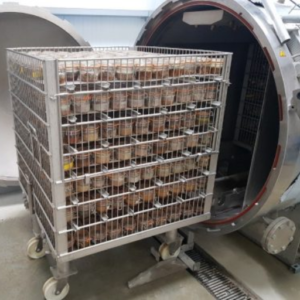
https://www.lagarde-autoclaves.com/
A heat-pressure combination is primarily used in a pet food sterilization machine to destroy harmful micro-organisms while maintaining the food’s nutritional value. Preheating is generally done before applying steam or dry heat, which targets pathogens in dog meat. In addition, appropriate timing ensures complete sanitization across the entire product. The cooled product should not be contaminated with any bacterium or yeast through this post-sterilization cooling process needed to retain its texture and flavor. These machines are essential in killing bacteria, molds, yeast, and other microbial organisms, which can contribute to the spoilage of these products and improve the shelf life and safety of canned dog foods.
Understanding Pet Food Sterilization
Pet food sterilization is a process of paramount importance. It guarantees the safety of pet food by removing harmful pathogens and, at the same time, retains its nutritional value and flavor. The most common approaches used in sterilization include retort sterilization, which employs high pressure and temperature to eliminate microorganisms; microwave sterilization, which utilizes electromagnetic waves to heat the inside of the food rapidly; or packaging, which is then sealed under sterile conditions aseptic processing. All these methods are instrumental in extending shelf life while maintaining product quality standards. As pet owners increasingly understand the implications of food safety, advanced sterility techniques have become an industry norm, guaranteeing secure meals for pets.
The Role of Retort Machines
Retort machines play a vital role in pet food sterilization by effectively killing dangerous microbes through high temperatures and pressure. They function by enclosing pet foods within chambers, creating settings needed for sterilizing them using steam or hot water. This technique ensures safe consumption and helps maintain nutrition levels and flavors. As per some sources from this industry, retort sterilization reduces contamination risks while increasing the shelf life of pet foods. The practical design of retort machines enables their continuous production as more people choose health-conscious options and seek safe, high-quality pet foods. Manufacturers can use retorting technology to keep them safe for pets without sacrificing taste or nutritional value.
Importance of High Temperature in Sterilization
High temperatures are a significant cause of pet food sterilization because they can effectively kill all types of harmful bacteria, viruses, and pathogens that may endanger the lives of animals. Undergoing high temperatures, microorganisms become inactive when proteins are denatured and cellular structures are disrupted by heat. Temperatures above 121 degrees Celsius (250 degrees Fahrenheit) are usually used in retort machines, and they ensure that even spores resistant to heat are destroyed with a safety margin. Also, using such processes ensures safety and helps maintain product organoleptic characteristics and nutritional value. Thus, high temperatures play a vital role in sterilizing pet foods and providing safe, tasty, and nutritious diets for pets, which meet consumers’ increasing desire for quality and security in animal nutrition.
What Are the Benefits of Using a Pet Food Sterilization Retort?
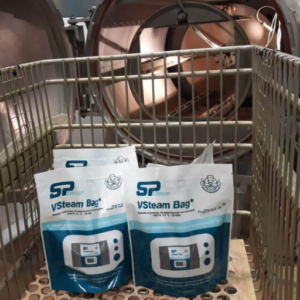
There are several vital reasons why adopting retort process technology for pet food sterilization is crucial for its overall quality and safety. Number one is that retort kills harmful microorganisms, thus reducing chances of contamination and keeping pets healthy. Secondly, food becomes more palatable to pets. Still, it remains safe due to a preservation method involving intense heating during sterilization, which helps retain flavor and nutrition content, among other factors that entice animals into feeding on them. Additionally, efficient retort machines enable substantial scale production, which meets rising customer requirements while maintaining uniform product standards. Finally, processed pet foods have long life spans, making them convenient to owners and allowing producers to reach broader markets.
Ensuring Food Safety and Shelf Life
Though pet food sterilization processes have many factors that need attention, extending the shelf life and ensuring food safety are of utmost importance. To avoid contamination, several professionals noted that a safe atmosphere should be maintained during production and packaging. Thus, modern retort systems have been designed to help control inconsistent and precise temperatures for adequately cooking foods. Moreover, websites such as the FDA claim that appropriately sterilized eliminates pathogens and hinders the growth of spoilage organisms; hence, it is essential.
Moreover, recent surveys among leaders in the pet food industry have highlighted the importance of sealing and packaging after sterilization to keep the product fresh and free from recontamination. More years of storage are achieved through these processes combined with high-heat techniques, which narrow down the possibility of having nutritionally complete pet meals that will remain safe for more extended periods within which pets can utilize them. Manufacturers should employ efficient sterilization methods to guarantee their products are compatible with established rules concerning pet food items.
Enhancing Pet Food Processing Efficiency
Enhancing efficiency in processing pet food involves combining advanced technology and making operations leaner. Automation is essential for improving production lines by reducing labor costs and making the process more consistent. For example, integrating automated blending and filling systems reduces the chances of human errors, thus ensuring that ingredient ratios are accurate enough. Furthermore, data analytics helps to oversee operational performance and point out production process holdups for manufacturers.
Besides, sustainable practices improve operational efficiency and resonate with environmentally concerned customers. Using energy-efficient equipment and recyclable packaging materials can significantly reduce waste and overheads. Sites like the Pet Food Industry and food processing argue that adopting these fashions enables producers to remain ahead of competitors while satisfying consumer needs for good-quality and sustainable pet foods.
Reducing Cross-Contamination Risks
Reduced cross-contamination risks are needed in pet food processing to guarantee product safety and consumer trust. Proper sanitation protocols are essential. These methods include cleaning equipment and surfaces at set intervals to limit contamination. The use of different machines for handling raw and cooked ingredients can also help reduce these risks.
Strict employee hygiene practices, such as mandatory handwashing and protective gear, should also be put in place. Some manufacturers have also embraced UV sterilization or air filtration systems, which reduce microbial risks that their foodstuffs may harbor. Besides, it’s necessary to hold routine training sessions for staff on food safety standards and contamination prevention techniques to maintain a safety culture throughout production. By adhering to these measures, pet food makers can considerably raise product safety levels while reassuring consumers about the quality of their offers.
What Are the Different Types of Pet Food Processing Equipment?
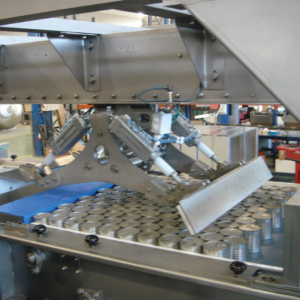
In pet food processing, various types of equipment have been developed to enhance efficiency and safety in the production line. The main kinds of machines include:
- Mixers: These blend different raw materials until they obtain even consistency and nutrient distribution.
- Extruders: They give pet food its desired shapes and forms while at the same time cooking or sterilizing the ingredients.
- Dryers: Responsible for removing moisture from extruded products, enhancing their shelf life and giving them a better texture.
- Pelletizers: This machine makes pellets that have a constant size and shape, which is well suited to that particular nutritional formulation.
- Mills: These are used to grind raw materials into finer particles, improving mixing efficiency during processing.
- Coating Equipment: It is added to bring flavors and fats to the final product, hence enhancing pets’ taste attraction toward it
- Packaging Machines: They are essential in ensuring that pet foods are sealed inside protective packaging that keeps them fresh and free from contamination
Each type of equipment is important in manufacturing high-quality pet foods that meet consumer expectations and health and safety regulations.
Retort Machines vs. Autoclave Systems
Retort machines and autoclave systems are vital in the pet food processing industry, primarily for sterilization. Retort machines perform thermal sterilization by steam under pressure. They also remove bacterial contamination by canning pet foods, thus maintaining their nutritional integrity and keeping flavor intact more than other techniques.
Contrary to this, autoclave systems work similarly but may be adjusted for large-scale cooking or sterilizing processes conducted inside bigger vessels. They employ pressurized steam to generate temperatures capable of entirely killing all microorganisms. On the one hand, both apparatuses appear helpful, but retort machines are commonly utilized for packed nourishments, while autoclaves are usually used for mass production. In conclusion, selecting these two methods depends on specific requirements during the production process and the needed preservation outcomes.
Batch Retort vs. Continuous Retort Systems
The underlying purpose of both batch retort systems and continuous retort systems is to sterilize and preserve pet food, albeit in different ways. Batch Retort Systems processes food in discrete batches, allowing for flexibility in production and handling different products with changing specifications. They are ideal for producers who require quick adjustments and smaller production runs.
On the other hand, Continuous Retort Systems are more streamlined and efficient as they process products on a flow basis. This design is advantageous for high-volume production since it maximizes throughput while minimizing processing time. Continuous systems usually need more capital upfront but are likely cheaper over the long run due to lower operating expenses and reduced labor requirements. Therefore, the pet food manufacturing industry uses either batch or continuous retort systems based on its scale of operation, available product mixtures, and operational goals.
Choosing the Right Food Sterilizer
It requires a comprehensive review based on insights from top-rated resources to determine the best sterilizer for food. First, the type of food products matters—a few sterilizers are manufactured specifically for particular types, such as liquids or solids, so matching them up with the right kind ensures the most efficient results can be obtained from such items when they go through these machines. Second is scalability and production volume, with batch retort systems preferred during small runs with varied products; however, continuous variants are suitable for operations at large capacities. Lastly, cost ownership considering initial capital expenditure (CAPEX), operational costs (OPEX) including maintenance must be considered. Manufacturers should also perform this assessment holistically, considering their objectives to choose an appropriate method to yield desired outcomes regarding efficiency levels, among others, during processes like pasteurization.
How to Choose the Best Sterilization Solutions for Wet Pet Food?
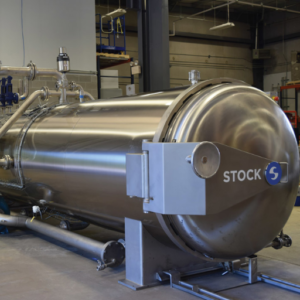
Various vital factors must be considered when choosing a sterilization option for moist pet food. First, evaluate the specific needs of your product, such as its composition and processing peculiarities, as different sterilization methods may affect texture and nutrient retention. Second, consider the required level of sterility; this will affect whether you go for autoclaving, aseptic processing, or other technologies. Furthermore, consider if the system is compatible with your production line to make integration more accessible and more efficient. Finally, consider its cost versus support services’ availability since ongoing maintenance and technical support are crucial for long-term operational success. By carefully analyzing these components, manufacturers can select a sterilization solution that meets their operational needs while keeping product quality.
Key Considerations When Selecting a Sterilizer
While selecting a sterilizer machine, several significant points should be taken into account before making up one’s mind about which one to buy. To begin with, understand the modes used in sterilization, like steam sterilization, dry heat, or chemical sterilants. Each has some applications, too, depending on the nature of the product to be steamed. Secondly, examine the capacity and scale of your equipment so that it will meet production requirements without ruling out future expansion. Thirdly, regulatory compliance must be ensured since sterilization methods must adhere to industry standards and food safety regulations relevant to pet food.
Moreover, assess how user-friendly it is; a more straightforward operation saves training time, hence reducing human errors considerably associated with complex machines. Lastly, don’t forget energy efficiency and footprint, which significantly impact long-term operational costs and facility layout, respectively. Careful consideration of those things by manufacturers will ensure that not only do they choose a machine that is suited to their immediate requirements but also provide support for sustainable production practices in general terms.
Comparing Processing Machinery in the Food Industry
Comparing food processing machinery and assessing capabilities, efficiency, and overall impact on production is necessary.
- Versatility and Adaptability: Many modern processing machines are designed to handle diverse types of foods, enabling producers to diversify their products without buying new equipment. Such adaptability helps respond to changing consumer tastes and market conditions.
- Automation and Technology Integration: Integrating sophisticated technologies like IoT and AI into food processing machines has become the norm. This integration improves monitoring, cuts down on human errors, and increases efficiency by anticipating future maintenance needs and real-time data analytics, which contributes to higher productivity and less downtime.
- Sustainability and Energy Efficiency: Machinery that minimizes its ecological footprint is increasingly being sought after. This includes equipment that optimizes resource use, such as water or energy, alongside machinery made of recyclable materials or built for easier repair, extending its useful life.
These factors are very important in selecting processing machinery. The machine must meet current production requirements but also be scalable and sustainable for future growth.
Working with Reliable Suppliers and Manufacturers
Reliable suppliers and manufacturers should be sought to source food processing machines. Here are some essential things to consider:
- Reputation and Track Record: Choose suppliers that consistently provide high-quality machinery and excellent customer service. Research online reviews, testimonials, and case studies to determine their level of trustworthiness within the industry.
- Support and After-Sales Service: Check that the chosen supplier offers extensive support, including installation, training, and maintenance services. Robust after-sales support could substantially affect equipment’s long-term performance, lowering the risks of possible downtime.
- Innovation and Technology: Engaging manufacturers that prioritize innovation enables access to the latest advancements in processing technology. This increases operational efficiency and ensures your production facilities’ competitiveness.
By focusing on these aspects, food manufacturers can develop productive relationships with suppliers so that they acquire machines that not only meet their needs but also support their growth and sustainability goals.
Understanding the Technical Specifications and Product Descriptions
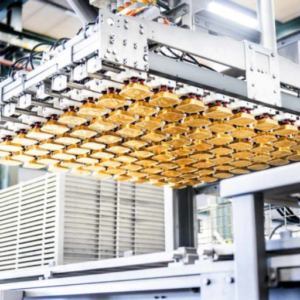
When considering processing machinery for the food industry, it is essential to understand its technical specifications and product descriptions. These specifications outline various aspects such as production capacity, energy consumption, or compliance with industry standards, thus providing crucial insights into the machine’s capabilities. It is necessary to compare these details with your production requirements to ascertain compatibility and efficiency between them. Additionally, reviewing product descriptions can disclose unique features that might enhance productivity or safety, hence the need for a careful review before buying one. Always consult with technical experts if necessary so that they help untangle intricate terms, thereby making informed decisions in purchasing while ensuring that selected equipment meets current plus future operational needs.
Basic Info on Pet Food Processing Equipment
There are several pet food processing machines meant for efficient production and safety. Primary types of equipment here include extruders that cook and form the pet food, mixers to ensure uniform ingredient distribution, and dryers that get rid of moisture, thus extending the shelf life. Moreover, packagers are essential in sealing and preserving the finished products. Production capacity and versatility, while also considering specific ingredient requirements, are some factors to consider when choosing these machines. Understanding their behavior and performance will help improve product quality and yield efficiency, which benefits the pet food industry.
Details and Price of Retort Machines
Retort machines play a vital role in sterilizing and preserving products in high-pressure cooking, particularly in the pet food processing industry. Generally, such machines use steam or pressure to maintain safety and extend shelf life for canned or pouched goods. Retort machine prices can vary depending on aspects such as size, degree of automation, etc., as specified by the manufacturer. For example, entry-level units may cost between $30k-$60K, while larger fully automated systems can retail at more than $150k, depending on features available. Before making a purchase, it is essential to review the manufacturer’s reputation, warranty support, and services, which go a long way in ensuring its operation ability even after years of use. Always seek quotes from multiple suppliers, considering possible extra costs like installation plus maintenance fees elsewhere.
High-Quality Pet Food Sterilization Techniques
Various techniques are used to ensure the safety and quality of pet food through sterilization. Among these are:
- Retort Sterilization: As previously stated, this mode utilizes steam and high pressure to kill harmful bacteria and other pathogens effectively. It is commonly used in canned or pouched pet foods for a longer shelf life with nutritional integrity.
- Steam Pasteurization: In this regard, pet food is exposed to steam at particular temperatures to kill all the microorganisms contained in it. The technique is very fast, which means that the taste and texture of food remain intact; hence, it has gained popularity in dry kibbles and semi-moist products.
- Hot Water Pasteurization: In this method, pet food is immersed in hot water for a given duration, ensuring complete sterility. Many times, it’s employed when recipes cannot withstand extreme pressure but still guarantee the final product can be taken safely.
Producers can make high-quality, nutritious pet food that assures safety and nutrition by adopting these methods.
Frequently Asked Questions (FAQs)
Q: What is the primary function of a pet food sterilization machine?
A: The primary function of a pet food sterilization machine is to sterilize canned pet food and other pet food products by eliminating harmful microorganisms. This ensures the safety and quality of the food for pets.
Q: How does an autoclave work in the pet food processing system?
A: An autoclave sterilizes pet food using high pressure and temperature to kill microorganisms. It is commonly used in the food industry to sterilize wet pet food, ensuring the final product is safe for consumption.
Q: What are the benefits of using a food sterilizer in pet food production?
A: A food sterilizer ensures food safety by killing harmful microorganisms, improving product quality, extending shelf life, and complying with health regulations. This is critical in the food industry and is particularly beneficial for wet pet food and canned pet food products.
Q: What are the different types of pet food that can be sterilized using these machines?
A: These machines can sterilize both wet and dry pet food. However, wet pet food, such as canned and tray-packed cat food, commonly undergoes sterilization to ensure safety and quality.
Q: Can you explain the importance of sterilization temperature and time?
A: Sterilization temperature and time are crucial factors because they determine the efficiency of microorganism elimination. Achieving the right balance ensures thorough sterilization without compromising the nutritional quality of the pet food product.
Q: What processing machinery is typically used in pet food production lines?
A: Processing machinery such as mixers, grinders, autoclaves, and food sterilizers are commonly used in pet food production lines. These machines work together to efficiently produce, sterilize, and package pet food.
Q: How does DTS technology contribute to pet food sterilization?
A: DTS technology in pet food sterilization machines enhances efficiency and accuracy. It provides precise control over sterilization parameters, ensuring consistent product quality and safety in the food production process.
Q: What role does making.com play in pet food technology?
A: Making.com provides a platform to explore and source various processing machinery, including sterilization machines. They connect pet food producers with manufacturers who offer advanced pet food technology to improve food production processes.
Q: How can I find details and prices about retort and other sterilization machinery?
A: To find details and prices about retorts and other sterilization machinery, you can visit platforms like making.com, contact Machinery Co Ltd, or send your message to specific manufacturers or suppliers who specialize in pet food technology.
Q: Why is sterilization a critical step in pet food production?
A: Sterilization is critical in pet food production because it ensures the elimination of harmful microorganisms, thereby guaranteeing the product’s safety and shelf life. This step is essential for maintaining food safety standards and protecting the health of pet owners’ beloved pets.












